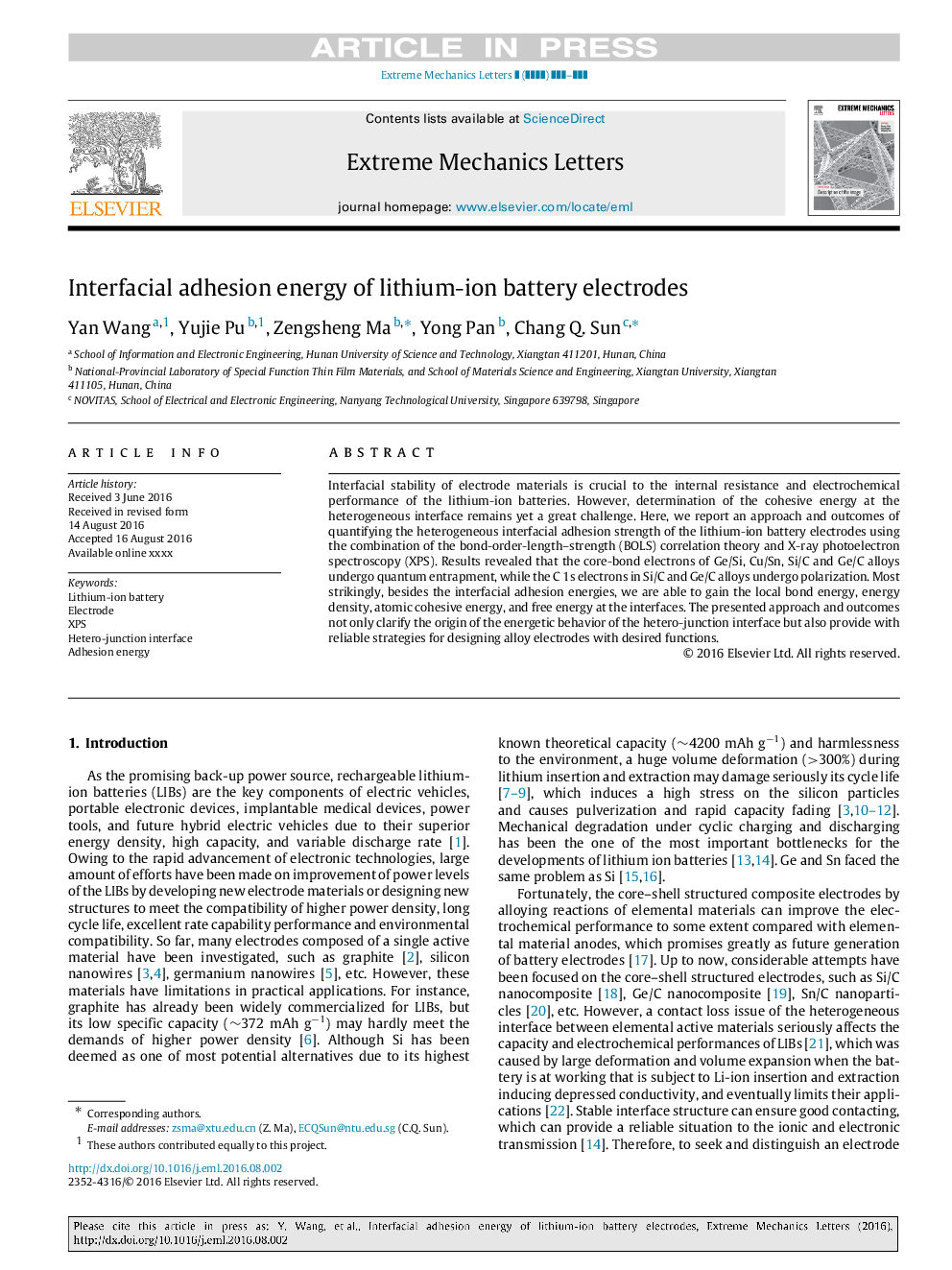| Article ID | Journal | Published Year | Pages | File Type |
|---|---|---|---|---|
| 5014630 | Extreme Mechanics Letters | 2016 | 10 Pages |
Abstract
Interfacial stability of electrode materials is crucial to the internal resistance and electrochemical performance of the lithium-ion batteries. However, determination of the cohesive energy at the heterogeneous interface remains yet a great challenge. Here, we report an approach and outcomes of quantifying the heterogeneous interfacial adhesion strength of the lithium-ion battery electrodes using the combination of the bond-order-length-strength (BOLS) correlation theory and X-ray photoelectron spectroscopy (XPS). Results revealed that the core-bond electrons of Ge/Si, Cu/Sn, Si/C and Ge/C alloys undergo quantum entrapment, while the C 1s electrons in Si/C and Ge/C alloys undergo polarization. Most strikingly, besides the interfacial adhesion energies, we are able to gain the local bond energy, energy density, atomic cohesive energy, and free energy at the interfaces. The presented approach and outcomes not only clarify the origin of the energetic behavior of the hetero-junction interface but also provide with reliable strategies for designing alloy electrodes with desired functions.
Related Topics
Physical Sciences and Engineering
Energy
Energy Engineering and Power Technology
Authors
Yan Wang, Yujie Pu, Zengsheng Ma, Yong Pan, Chang Q. Sun,
